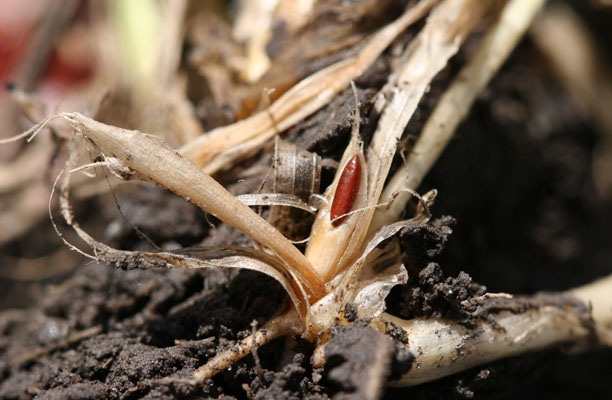March 13, 2014

Historically, most North Carolina Hessian fly wheat problems occur in the eastern part of the state, but damage this year extends into the Coastal Plain region. Dominic Reisig, NC State Extension entomologists, talks about what wheat farmers can do.
In a recent blog, Reisig explains when and where a spring spray might save some wheat yield.
Remember how wet last summer was? Stupid question. Some wheat was never harvested or was harvested late. We also had abundant summer rain that could have germinated some volunteer wheat in soybeans planted behind wheat. These conditions created abundant oversummering habitat for the fly, resulting in fall infestations. We are noticing these now since our wheat is picking up. This damage is already done, but what can we do to prevent damage from spring infestations?
First, it is important to scout your wheat to determine if symptoms you are seeing (yellowing, lack of vigorous growth, poor tillering, etc.) is a result of Hessian fly or something else. Other causal agents of these symptoms could include things like cold weather, lack of nitrogen, and wetness. Hessian fly are present as pupae in the fields at this time of the year. To scout for pupae, carefully dig up tillers below the soil and peel back the outer layers of leaves. Often pupae will fall out into the soil or will be feeding on the base of the plant behind these leaves.
Check current wheat futures prices
Once you have determined the presence of Hessian fly, you need to make a decision about what to do with your field. Our resistant varieties are still holding up well, so you should focus on fields that are planted with a susceptible variety. Then separate your fields with susceptible varieties into three categories independent of planting date.
Fields that have some Hessian fly from the fall generation and are planted with a susceptible variety. Research from our state has shown that these fields will not benefit from a spring foliar spray. All fields with a susceptible variety likely have Hessian fly at some level. The vast majority of fields in our state fall into this category.
Fields that are moderately infested with Hessian fly from the fall generation and are planted with a susceptible variety. These fields may benefit from a spring foliar spray, but timing will be critical. Try to time the spray for warm weather we are experiencing in late March.
You can improve your chances for spray effectiveness by looking at the progression of pupae development. When you squeeze them and they begin to pop pink or red, instead of white, they are close to becoming adults. Remember that we are timing the spray to kill adults, so you should try to hold off your spray until most of the pupae are developed or some have emerged. The cutoff for this category (heavily infested) and the previous category might be somewhere around 50 percent infested tillers from the fall generation.
Fields that are severely infested with Hessian fly from the fall generation and are planted with a susceptible variety. Unfortunately the best option for some fields will be to till them up. Fields approaching a 100 percent rate of infested tillers with plants that are dying or dead will fall into this category. I would not waste spraying a field that did not tiller well in the fall and was set back by Hessian fly and cold wet weather.
You May Also Like




